Welcome to Horus Heresy Tactica, our series that provides a deep dive in a specific mechanic, interaction or aspect of play in Warhammer: the Horus Heresy.
Manoeuvre and positioning are a key part of success in Horus Heresy so solving the issue of “how do my get my units to where they need to be” is an insistent conundrum. There are many answers to this question of course, including many of the alternative deployment methods, but one of the most reliable and commonly used is the transport. Vehicles that cart your little plastic friends around the battlefield, throwing them out where they need to be and then either acting as infantry fighting vehicles or being left to wander the battlefield lonely and unwanted, used only as cover and to ram unsuspecting foes.
But how reliable are transports? What are they good for and when? When do I need an assault transport? What should my transport do after everyone gets out? Today we’re going to answer all these questions.
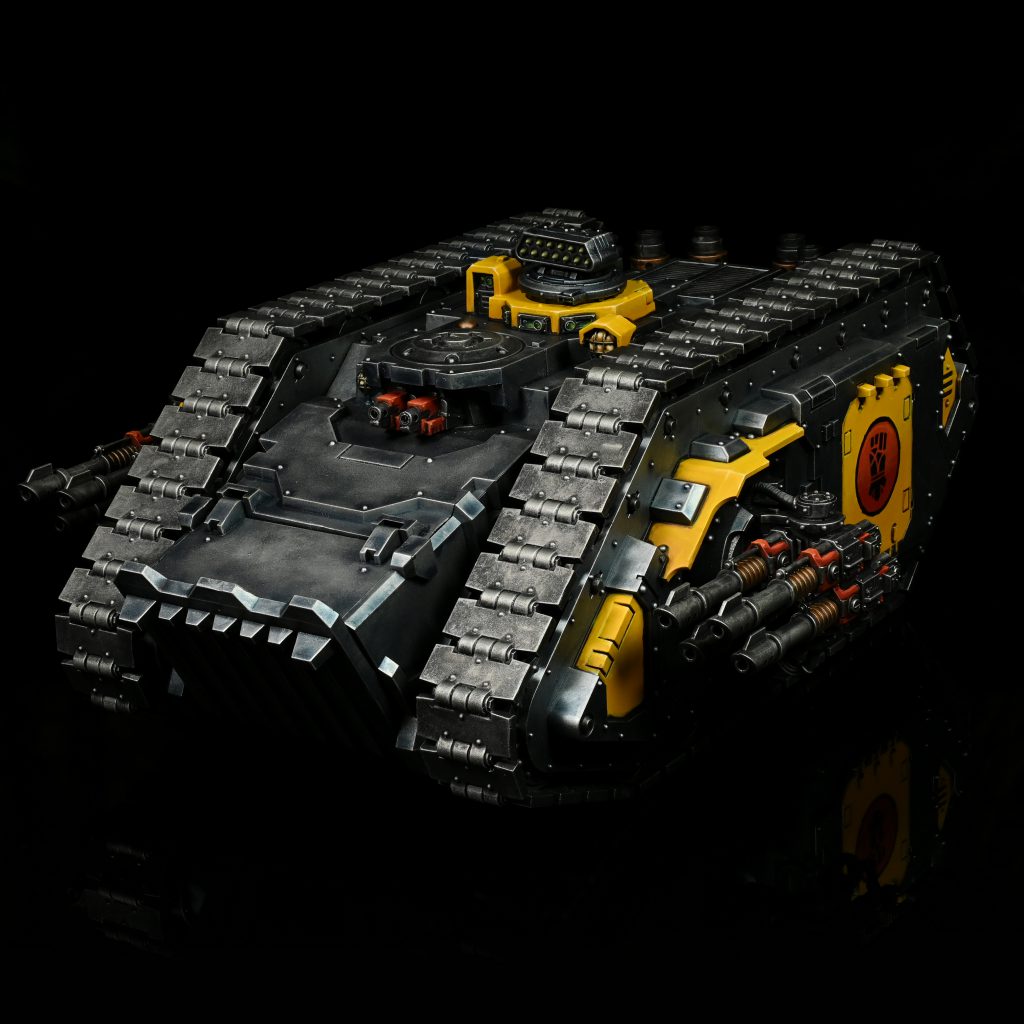
Transport basics
At its heart a transport is just a vehicle like any other – it has the same strengths (basically immune to small arms fire) and weaknesses (can go pop at a moment’s notice, sometimes gets stuck on a small pile of rubble) as other vehicles. However a key distinction is their transport capacity, the number of models that can ride inside. However beyond this commonality transports can be as different from each other as any other vehicles. From the humble Rhino to the mighty Land Raider Spartan to the fast and agile Kharon Pattern Acquisitor, transports are a very varied category.
Barring any special rules, this is how transports work in brief:
A unit (just the one unless the transport is super-heavy) and any Independent Characters accompanying them that is riding in the transport (usually put in there at deployment, though perhaps having mounted during play) is effectively moved around with the vehicle itself. While embarked the unit can’t really interact with the rest of the game (though a small number of special rules specifically indicate otherwise) unless they want to disembark which they must do in the movement phase and either before the transport vehicle itself moves or after as long as it’s not moved more than half its Movement Characteristic (note that this is a fixed value, and unaffected by the Fast rule). If everyone got out before the vehicle moved it can now move a normal move, otherwise it’s stuck where it is. You can’t ram with a vehicle after a unit disembarks.
When a unit disembarks, one model at a time place them in base contact with one of the Access Points of the vehicle and then make a normal move following all the normal rules. Then do this with all the other models in the unit ending them in unit coherency. This is an important process – you’re not moving them their move from the access point, you’re placing them and then moving them, so you effectively get their base width as extra movement. This can be key for assaults out of vehicles in particular.
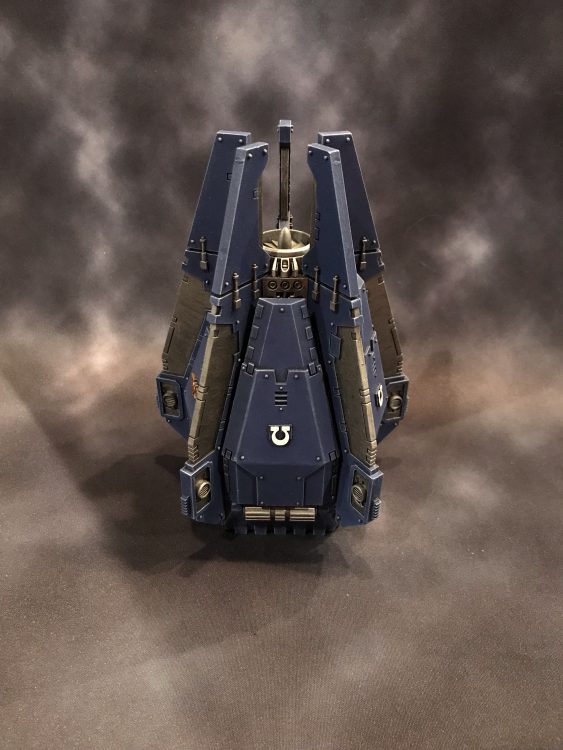
Speaking of which, unless a special rule comes into play (and it’s obviously going to given the previous paragraph) you cannot assault in the turn you disembark, though you can shoot as normal (but obviously count as moving, unless you’re Death Guard).
There are also some other… exciting ways to disembark. These are emergency disembarkations, which is basically the unit bugging out because the vehicle was destroyed. If it was just wrecked the unit disembark just from anywhere in contact with the vehicle’s hull rather than a specific access point. If it blows up then instead you put the models in the footprint of the destroyed vehicle. One key rule that’s easy to overlook is that if a shooting attack destroyed a transport, the shooting unit can charge the passengers that disembark.
One last thing to remember is embarking can form part of a movement reaction, so you can react to get a unit back in the bus to have them ready to drive away.
Transport slightly less basics
However, there are three key special rules that apply to transports that are worth considering:
- Assault Vehicle
- Infantry Transport
- Impact-Reactive Doors
All three of these dramatically change up how a transport works.
Assault Vehicle is basically what makes transports worthwhile to assault troops. When disembarking from a transport with this rule you can charge in the same turn. This is absolutely essential for anything with a combat focus, and it means that a lot of transports that seem appealing for combat units (like Despoilers in a Rhino) are a bad idea. For marines the key assault transport is the Land Raider and its variants, but for other armies it’s a big of a crap shoot whether a transport is an assault transport or not. The Custodes (who absolutely want one) don’t get one while the Sisters of Silence (who often don’t care) have their standard transport be one. But the fact remains: if your unit is mostly to hit people, their transport should have the Assault Transport rule, and if it doesn’t then it’s probably a mistake to take it.
Infantry Transport says that you can’t put Bulky models inside. This basically restricts Terminators, Custodes and other Big Guys from getting inside dinky little Rhinos and the like. It’s worth bearing in mind, but honestly rarely comes up because the majority of stuff that’s an Infantry Transport is not an Assault Vehicle and so you don’t want to put your Biggest Guys inside anyway.
Impact-Reactive Doors only come on transports that also have deepstrike (drop pods basically) and they mean that as soon as you drop that pod the doors open and everyone gets out. This is important because it kind of changes them from being transports in the normal sense to purely a middle manager for deep striking units.
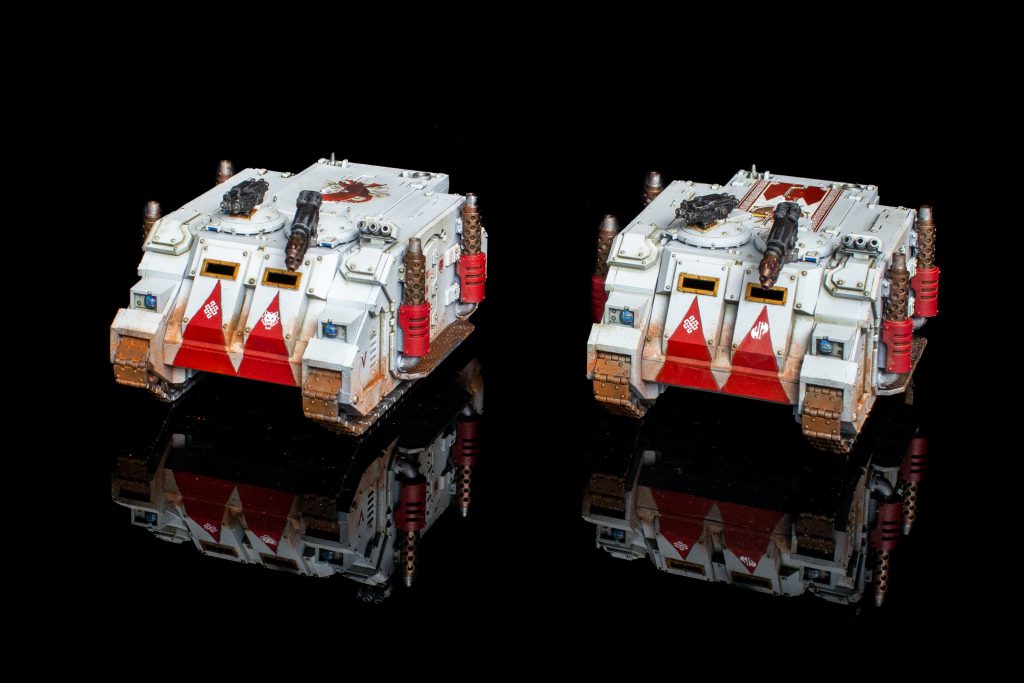
When are transports useful?
The honest answer is, like many things in Horus Heresy, “it depends”. However, when you’re trying to evaluate whether you should put a unit in a transport you should consider:
- does the unit have another way of getting to the right range/location without a transport (scout, infiltrate, deep strike, outflank, etc)?
- does the unit actually need to move faster than it does on foot? Most marines move 7″, custodes move 8″, with a run you’d be surprised how quickly they can get about. And that’s before we get to jump packs and the like which change the game entirely. Plus, if they have relatively long-range weapons then they’re more manoeuvring to find targets not getting to a particular location. Finally if they’re a line unit to hold objectives remember a surprising number of objectives are relatively close to your deployment zone or only score at the end of the game so you’ll have time to hike over there
- does the unit fit the transports available to it? If the unit is a close combat unit, does it have a suitable Assault Vehicle? Is the unit actually tougher than the vehicle, or does the risk of explosion outweigh the potential protection of the metal box?
- does the transport take up a slot or is it dedicated? Will I be giving up something else for it? How many points is it worth and am I better off just spending those points on something else?
It’s surprising how often, once you’ve run through this list, it doesn’t feel worth having a transport. Rhinos are cheap but they’re not assault transports, they offer very little protection and often the unit inside doesn’t need the extra bump of speed to get around. However if you do take some (and there are cases where you should seriously consider it) and your unit gets out… what next?
What do I do with this Rhino exactly?
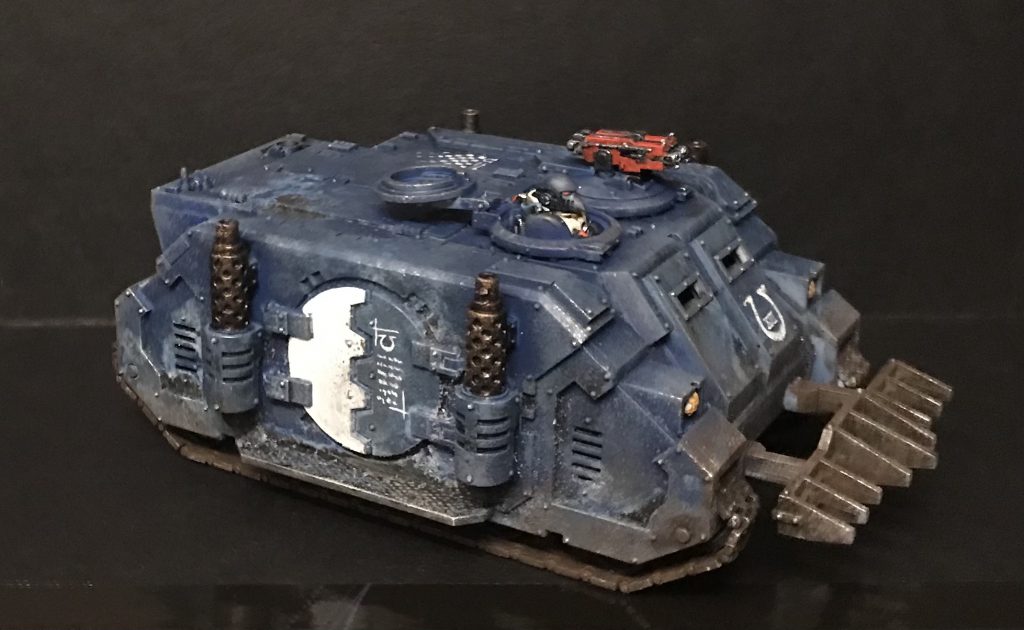
The Rhino is the iconic transport of the legions, and you’re likely to see a load on the battlefield. But they are lightly armed and armoured to say the least, and putting heavy weapons on them often feels foolish because they’re going to die so fast getting any use out of them feels unlikely. So if you have your rhino with a twin-linked bolter on top and no other armament, what do you do with it once you’ve dropped off that Tactical Squad at their objective? There are three options:
- Become cover
- Become an obstacle
- Become a menace
Parking a Rhino in front of that tactical squad to shield them from fire is very effective. Even if, as is likely, the Rhino is destroyed, then unless it explodes it’s going to stay there as a wreck and block line of sight.
If that’s not worth it for some reason, then another good option is for it to speed away, park itself across a gap enemy units want to get through and sit there. Once destroyed the rules are a little confusing about what it counts as in terms of difficult terrain, but at the very least models will have to go up and over it which costs movement, and while it survives they can’t just go over the top. This can be a surprisingly effective barrier.
Finally if neither of these options are worthwhile it’s time to get mean.
Ramming is a special kind of attack made, unusually, in the Movement phase. It’s made instead of normal movement, and ramming means that the vehicle can only make Snap Shots in that turn’s Shooting phase. This means, of course, that it’s almost never a desirable move for anything that is particularly good in the Shooting phase meaning that the most likely candidates for ramming are vehicles with minimal armaments – Rhinos are perfect.
When you perform a Ram Attack you pivot the vehicle then move it straight forwards until it hits an enemy unit or you run out movement speed. If it contacts a non-Vehicle unit then that unit has been rammed, and you are going to inflict d6 automatic hits with your Rhino at a Strength equal to half the front armour round up (6 for Rhinos) and no ap. After this, the target unit makes a morale check and falls back if it fails. If it contacts a Vehicle or Building then you and the target inflict hits on each other, with Strength being half armour rating round up.
This actually makes Rhinos kind of a threat to infantry. Not because you’re likely to kill much, but because they’re taking that morale check anyway. Pushing a unit to run away from a 35pt Rhino is an excellent use of resources, and if you can do it, you should.
Concrete Details Please
Should you take a transport? Ok, for marines only (because I don’t have all day here):
- Take a Rhino for one or two tactical squads if you fancy, but don’t go overboard. You can put a tactical support squads in there, with the best one being flamers, but honestly it’s probably not worth it. Not many other compelling uses for the humble rhino
- Take a Land Raider Proteus Carrier for small units of terminators, dedicated assault squads, veterans that don’t want to go in a drop pod or such, and so on. They’re the backbone of your army, and you can also put your warlord and command squad in there
- Take a Land Raider Spartan for your big blobs of terminators, probably legion specialist terminators, or a swarm of infantry that can fight. It’s also the classic Primarch battle bus.
- Take a Drop Pod for a unit of Veterans if you have a bunch of other deep striking units you want to benefit from the guidance systems on the pod, but don’t be surprised if the veterans evaporate into red mist on landing
- Don’t bother taking other transports. Sorry. They’re basically all bad in 99% of situations. Especially the planes.
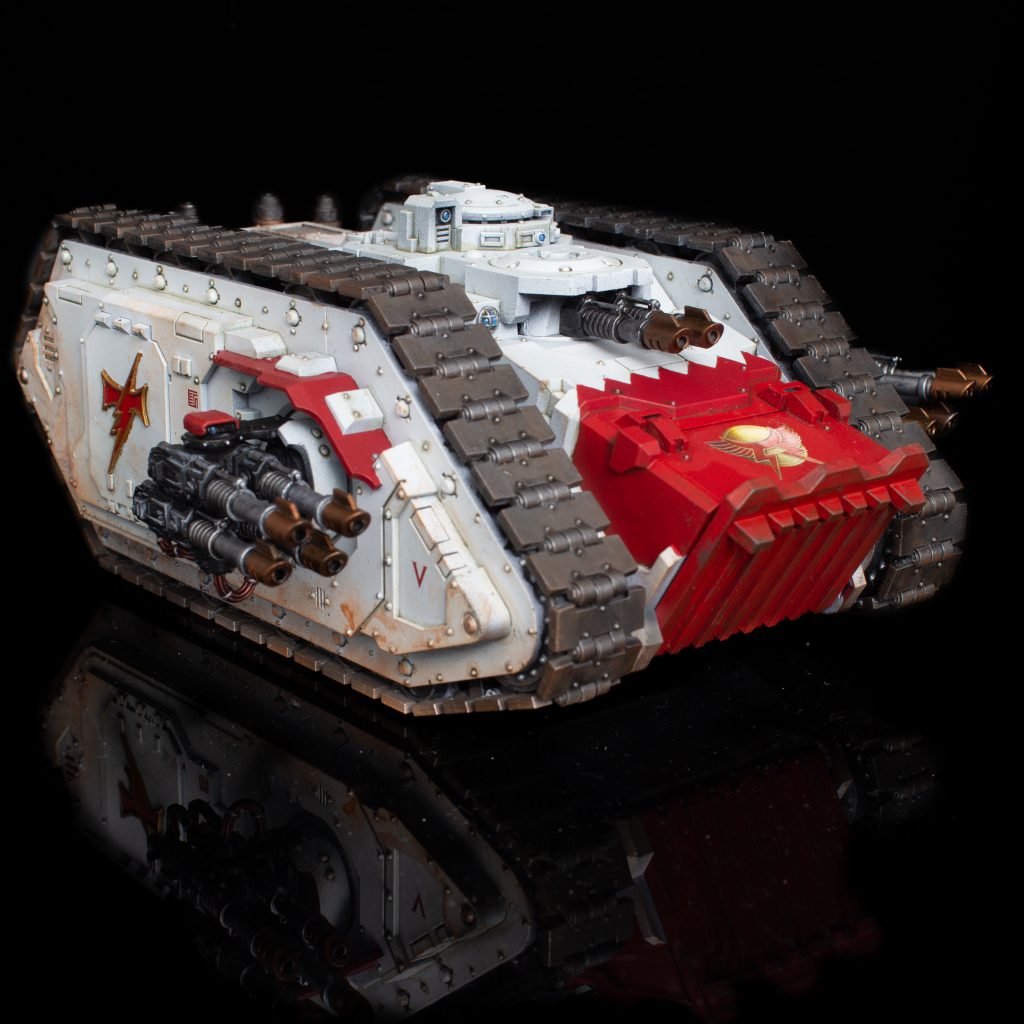
In conclusion
Transports can be a very useful tool, but one thing that surprises folks is that they’re often not as useful as you’d like. They have significant limitations, and the ones that are valuable in of themselves are relatively expensive. They can be a fantastic part of your army, and in particular Land Raiders provide a superb tool for marines, but otherwise things are bit mixed. The humble Rhino struggles to be worthwhile in many cases, but if you do take one and the guys inside do get out, then it’s time to rev that engine and ram the hell out of some idiots to make them run away.
Comments? Criticisms? Impassioned defences of the Rhino? Tell us in the comments below, or email us at contact@goonhammer.com.


